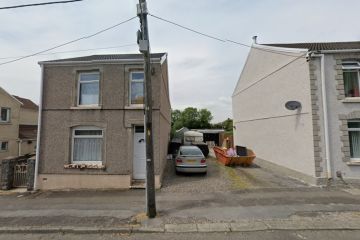Canberra architect Tony Trobe slams ACT energy efficiency ratings system
A leading Canberra architect says the ACT’s energy efficiency ratings system has fallen into disarray with its complexities and inconsistencies between score cards undermining the model’s credibility.
TT Architecture director Tony Trobe said a lack of proper training for energy assessors, the software used to generate star ratings and the added costs of extending older homes were among the major issues affecting home owners and architects in the capital.
He said the ACT government had previously made a strong commitment to boosting energy efficiency, including the mandatory disclosure of ratings when a house is sold, but said the process of rating homes had “fallen into disrepute”.
“The general feeling is the whole system has been neglected,” he said.
“Instead of being trailblazers in this we’re really, now, like a disused car yard, with all these rusting hogs sitting around unloved, unattended and there’s no passion for it. It needs some support.”
Mr Trobe said the training of assessors was “virtually non-existent”, while the regulations outlined in the Building Code of Australia required “a PhD to understand” how the process worked.
“A lot of the certifiers are not sufficiently qualified to make a judgement on this and are throwing their hands in the air saying, ‘we don’t understand it’, so interpret the whole thing in different ways,” he said.
Similarly, Energy Partners director and Australian Solar Council ACT president Trevor Lee agreed the rating of houses was inconsistent, largely due to the software used to churn out the number of stars.
Under the Building Act 2004, all new buildings constructed in the territory must comply with the provisions of the Building Code of Australia, including energy efficiency requirements.
Since May 1, 2009, only second-generation software can be used to generate a rating for new houses, while existing homes are still rated via first-generation software.
Mr Lee said the use of the different programs could create discrepancies if two ratings didn’t match.
“That results in a loss of credibility,” Mr Lee said.
“The problem is the old software is capped at six stars in a 10-star scheme.”
Mr Trobe said such discrepancies could see a Canberran buy a house flagged as six stars, only to have the same property later rated at four stars.
“Not only do the stars have different values but the way the rating is done is different,” he said.
“At the moment everyone thinks a star is a star is a star but it’s not.”
Mr Trobe said some home owners settled on zero star ratings to avoid paying for an assessment.
“People are just thumbing their nose at the energy rating system,” he said. “They can’t be penalised for not doing it – you’ve just got to declare a rating.”
He said the rating system also discouraged home owners from adding extensions or alterations, with some people giving up or bulldozing the property.
“It’s so difficult to get the existing house up to a level of energy efficiency, and so expensive, that people are actually walking away from taking those steps,” he said.
“If they’re enforced, for instance, to double glaze the whole of the existing house, get under the floor, re-insulate it, take all the roof off to insulate the walls, that becomes prohibitively expensive and they just don’t do it.”
Mr Trobe cited an example where north-facing windows were removed from the design of an extension to pass the required rating.
“Any system that requires you to do that, there has to be something wrong with it,” he said.
Minister for Planning Mick Gentleman said buyers could prioritise a house’s other features over its energy efficiency rating or buy a property with the intention of renovating and improving the building’s energy efficiency later.
He said a rating wasn’t required for the demolition of a house if the demolition carried valid development approval or a notice issued by the building regulator.
“If a person chooses to knock down a dwelling, the replacement dwelling will need to meet the full energy efficiency provisions of the Building Code of Australia,” he said.
“[The Environmental and Planning Directorate] is not aware of any owners arranging and paying for their houses to be bulldozed to avoid obtaining an EER.”
Mr Gentleman said the cost of obtaining a rating was generally less than $300 and usually undertaken in conjunction with mandatory building and pest inspections.
We recommend
We thought you might like
States
Capital Cities
Capital Cities - Rentals
Popular Areas
Allhomes
More







